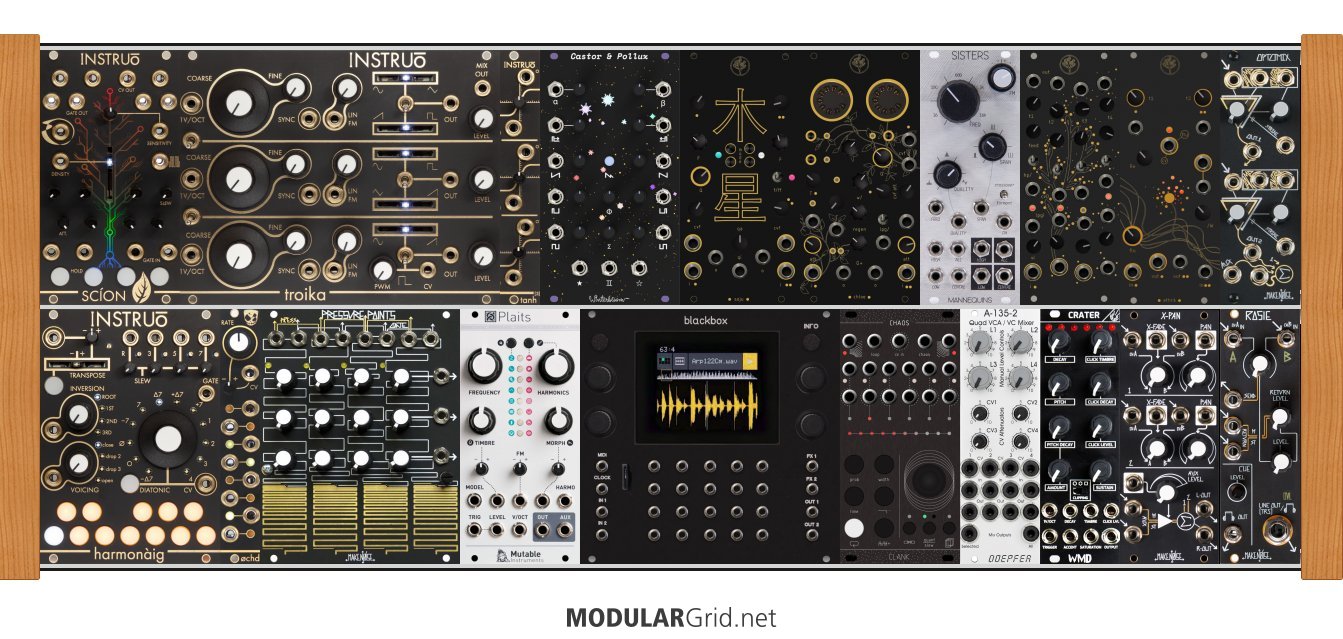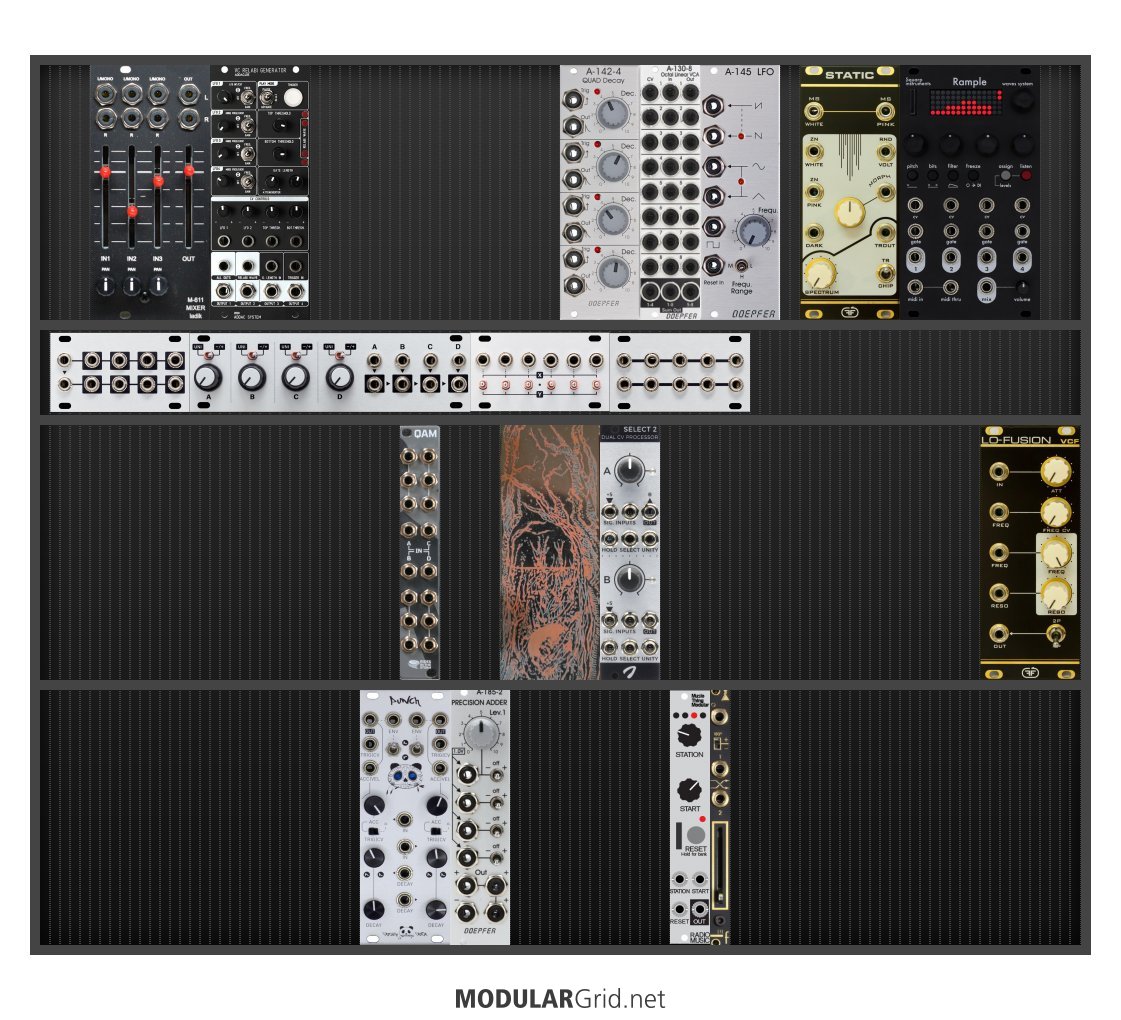The idea behind this rack is to be able to create ambient soundscapes, structured songs, and to have enough voices to have multiple tracks within a patch.
trying to do too much in too small a space - very synthesis with modules, as opposed to modular synthesis
Harmonaig gives musical sequencing to any of the 6 voices (C&P, Troika, and Plaits) that I would have. Pressure points allow me to melodically sequence as well as have touch control.
iirc:
harmonaig is not a sequencer, it's a quantizer - you need to feed it sequences to get it to work
pressure points needs brains to get it to actually sequence - and probably some sort of clock module
Crater is a kick drum that sounds sick and I wanted a kick drum module.
but what about a snare and hats???
Scion takes biometric feedback from organic matter and converts it to CV. F***ing awesome.
yeah - nice to have somewhere down the road, maybe, but I think the space is better suited to other modules in a small cases such as this
Bitbox allows me to load samples into my patch.
it's a very big solution for this in such a small rack!!!!
Lots of VCA's, Doepfer A-135-2, Optomix, and x-pan. As well as Attenuators inside modules.
let's rephrase that as 'some vcas' - enough for the audio perhaps - but what about the modulation??? and very little in the way of mixing for either sound or modulation sources... there's not really enough mixing capability for the audio!
Filters, Seju, Chloe MK2, Quarte and Sisters, Too Many?
probably - plaits already has a filter/vca - ie an lpg and you also have optomix - so there's another 3 filters!!!
Chaos provides modulation. OCHD gives 8 random LFOS for modulation.
not enough modulation sources compared to sound generators, imo
Tanh is a limiter and feedback module that I can send Troika into.
Chloe MK2 and Athra MK2 sound absolutely gorgeous. They're tube-driven delay modules, it's hard for me to explain with my newbie brain but they sound beautiful. They act as a sort of effect in this setup.
but what about other effects - reverb, phasing etc - or arre you just going to use
Rosie lets me send the audio out of my rack, also allows me to connect to my pedalboard and send the effects back (I think).
discontinued for quite a while - and will not do the pedalboard thing well - get a separate module (or modules) for this (2 or 3 or 4 aisynthesis pedal integration modules for instance)
if you have a pedal board - are you are guitarist?? - maybe an instrument interface is also a good idea - the sonicsmith ev1 looks to be the best at the moment, but is pricey - as a starter maybe veils and a disting mk4 would be a good idea - veils for more vcas and enough gain for guitar to modular level & disting as it has an envelope/pitch follower - you'll probably also want some logic to extract gates from this
and a better end of chain mixer - you probably don't need an 'output' module...
Hopefully, this makes sense!
maybe to you - but you're ignoring the interesting modules that actually make modular synthesis worthwhile compared to fixed architecture synths - utilities!
see my signature!!! the formula is how to get the most versatility from a modular for the least money... it works and is scalable to any size modular...
I'd want another row to add a couple more effects modules, another modulation source or 2 and some more utilities - at least more mixing (including some sub-mixers and a matrix mixer), sequential switching, offsets, attenuators, slew limiters, logic etc etc
If you are set on all or most of the modules in this case I would seriously suggest a much bigger case - at least 1 more row, preferably 2 - so that you have the space available for all the support modules that you will need to add variety and for some space to expand into after that!
"some of the best base-level info to remember can be found in Jim's sigfile" @Lugia
Utility modules are the dull polish that makes the shiny modules actually shine!!!
sound sources < sound modifiers < modulation sources < utilities



